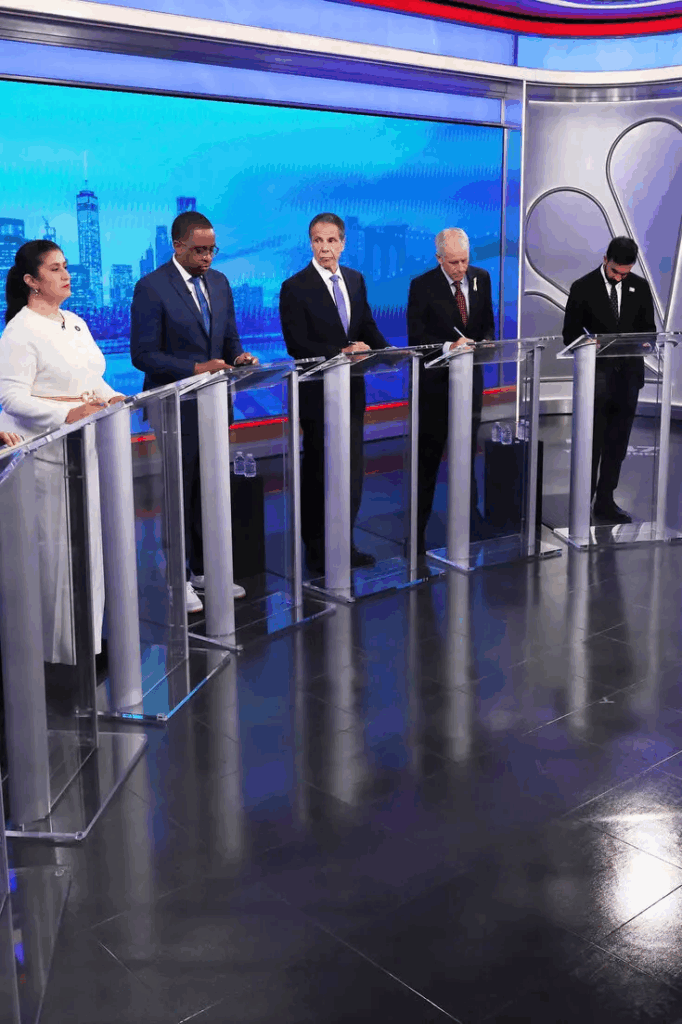As the dynamic in the New York Mayoral Primary shows, ranked-choice voting disadvantages polarizing candidates

In this year’s primary for New York City mayor, two candidates who were attracting similar followings endorsed each other. Ranked-choice voting (RCV) is why. Let’s take a look at how RCV has affected past elections and how it’s likely to affect future voting.
Ranked-choice voting has already affected US elections
In a ranked-choice voting system, every voter can vote for a first choice, second choice, and so on. Candidates with the least number of first-choice votes have those votes allocated to the voters’ second choices, and that process continues until one candidate receives a majority of the votes.
As I previously explored in this space, this theoretically favors moderate candidates over extreme ones. Extreme candidates may get a plurality (more votes than any other candidate), but not a majority (more than 50% of the votes). When votes for less popular candidates are reallocated to second choices, those second choices are more likely to be moderates that are somewhat close in position to the more extreme candidates.
This has had notable effects in some recent elections. In the 2022 special election for Alaska’s representative in the U.S. House of Representatives, the Democrat Mary Peltola won, even though she did not get a majority of the first-choice votes. Voters who originally voted for the third-place candidate, Republican Nick Begich, had their votes redistributed to the other two candidates, Republican Sarah Palin and Peltola. Enough voted for Peltola as a second-choice to elect her.
Interestingly, in the 2024 rematch for the House representative from Alaska, Palin didn’t run. Nearly all of the votes went to Begich and Peltola, but neither candidate reached a majority. After second-choice votes from other candidates were reallocated, Begich reached a majority and won the seat.
As I explained recently, an election for Maine city council that I voted in turned on ranked-choice voting, which is the Maine law. A democratic socialist who was running neck-and-neck with another candidate lost the seat because the second-choice votes of other candidates pushed her opponent to a majority.
What’s happening in New York City
RCV influences candidates’ positions and actions significantly. Notably, it tamps down attacks by similar candidates on each other, because negative campaigning about another candidate makes it difficult to get second-choice votes from that candidate’s backers.
In New York, this is playing out as two progressive candidates with similar positions, Zohran Mamdani and Brad Lander, recently cross-endorsed each other in the RCV democratic primary, saying, essentially, “If you put my name first on your ballot, put his name second, because he’s a decent alternative to me.” Mamdani and Lander are running second and third in polls behind former New York Governor Andrew Cuomo, who had resigned the governorship due to accusations of sexual harassment.
It’s not clear at this point whether Mamdani’s and Lander’s strategy to defeat Cuomo in the democratic primary will work. It’s likely that Cuomo will not get a majority of the first-place votes. But can Mamdani’s and Lander’s votes combined surpass Cuomo’s? And will their voters follow their recommendations and put them as second choices on their ballots?
I still think RCV is a positive development
I don’t know enough about New York City politics to know which candidate is best. But I like the idea that two similar candidates can both run without spoiling each other’s chances and contributing to the election of somebody else.
Ranked Choice Voting is bad for candidates that are loved by a minority and hated by nearly everybody else. It’s also bad for candidates that succeed mostly based on personal attacks on other candidates. I think that’s a good thing for elections. What do you think?
You might be interested in this podcast. It highlights some aspects I’d not thought about.
https://podcasts.apple.com/us/podcast/explain-it-to-me/id1042433083?i=1000677607330
I’m a voter in NYC, and I’m seeing people who favor other candidates advocate that voters not rank Cuomo at all. (There’s no requirement that voters rank all the candidates, you can still just vote for one.) It’ll be interesting to see how that works as a campaign strategy. There is some negative campaigning going on, too.
Ranked choice voting has worked well in Australia for over a century, so it’s good to see you backward Americans starting to catch up.